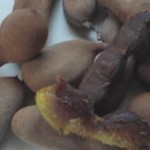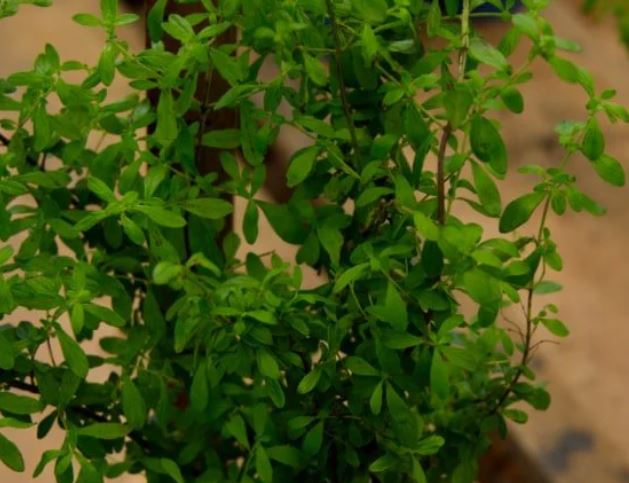It’s tamarind season in Jamaica, and it is yet little known how critical this fruit is as a main ingredient to a bottle of ‘browning’ used widely in gravies. Tamarind is also the secret ingredient that gives Worcestershire sauce.
As you walk around Kingston alone, several crops are either at their end or just ripened ready to be picked. You can’t always tell which tree yields the sweet fruit or which will give the tangy sour fruits, but either way tamarinds are picked at this time of the year by irresistible Jamaicans in love with the fruit.
Then some use it in seasonings, spices, or flavouring gravies. Others make tamarind balls of all sorts and vendors line streets for school children and adults alike. A bag full, a handful of tamarind, or a spoonful of the sugary tamarind balls or the chewy sweet stew made from tamarind is enjoyed by many. Who’d have guessed the many health benefits of tamarind that send some scurrying to the bathroom after over-indulging.
Eating tamarind prevents and rids children of stomach worms, lowers cholesterol levels, thus prevents various cardiovascular diseases. It is said to purify the blood, cure malaria and rid sore throat as common uses.
Here are a few unknown, but potent benefits
EXTERNAL BENEFITS:
1. Cure for sprains, inflammation, swellings and pain. Mix concentrated tamarind with water and salt, and place on sprained or swollen area.
2. Healing fractures. Warm a mixture of concentrated tamarind extract and sesame oil and apply externally.
3. For Healthy Skin and eliminating body odour. Tamarind tree leaves can be used to bathe one’s body especially if you are taking a bath in natural mineral water, hot preferably, to get clean glowing skin.
4. Eliminating body odour. Applying tamarind concentrate to the sweaty areas closes the pores, thus preventing the body odor. However do not use too much an clog your pores which need to be open at times to breathe.
INTERNALLY:
5. As a spice ingredient, originally from India the flesh of the tamarind fruit is used in curries and chutneys
6. As a laxative, antinauseant, and vermifuge. Make tea from the bark or leaves or simply eat lots of the fruit. Cinnamon powder can be added to reduce the tang of the sour fruit.
7. To treat and cure jaundice, hyperacidity, flatulence, and fevers. The leaves are boiled into a tea or the fruit fleshed out in water is heated up and taken
8. For fever and cold. Mixing tamarind concentrate with turmeric
9. Flu and other infections. A drink made with tamarind concentrate, cloves, sugar, milk, and cardamom cleas symptoms and speeds up the cycle of the common flu.
10. Frees nasal and chest congestion. You can also drink a bowl of hot soup made with concentrated tamarind extract, freshly ground black pepper, and salt.
11. An infusion of tamarind makes a great gargle for sore throats. Dosage – 1 cup taken 2-3 daily
12. The herb is excellent for clearing heat in people with deficiency, with such symptoms as night sweats and ringing in the ears.
13. Good For ringing and painful Ears and ear infection. The antibiotic property of a warm tamarind concentrate relieves one from ear infections.
14. Healthy skin. Tamarind concentrate taken internally clears the pores and reduces body odour.
15. A great source of antioxidants. A rich source of antioxidants, the concentrate is known to fight free radicals that can trigger cancer. These antioxidants along with vitamin E, vitamin C, and flavanoids enable the concentrate to act as a natural anti-carcinogen.
16. Aids digestion and frees constipation. A natural and wonderful laxative, it rids constipation ensuring good bowel movement.
17. Cures Scurvy. Tamarind contains high vitamin C which cures for scurvy. Mix concentrate with salt and pepper or a sweetener for faster healing of scurvy.
QUICK FACTS:
LATIN NAME: Tamarindus indica
ALIASES: Tamarind, Indian date
PATS USED: Leaves, bark, Fruit, Fruit Pulp
USAGES: Varied but mostly as a paste for cooking, as herb for tea.
SIDE EFFECTS: None noted.
BOTANICAL INFO: It grows as a moderate to large-sized evergreen tree native to India with small fern-like leaves and long brownish-yellow hairy pods with a sticky-sweet and/or sour flavour.
USEFUL LINKS:
http://www.altmd.com/Articles/Tamarind-Herbal-Remedies
http://www.nutrition-and-you.com/tamarind.html
http://herbs.ygoy.com/top-15-health-benefits-of-tamarind/
http://www.travellady.com/Issues/June06/3312Tamarind.htm
Author Profile
- ... author, qualified & experienced in journalism, creative writing, editing, the arts, art critique, paralegal, photography, teaching, research, event planning, motivational speaking, workshops for children and adults, visual arts etc. Click here for contact form. ...or email me here
Latest entries
 Raw and DirectDecember 14, 2025Goodbye Ruth Lawrence, judge forever
Raw and DirectDecember 14, 2025Goodbye Ruth Lawrence, judge forever Charity and ProjectsNovember 23, 202526 days after Melissa hit Jamaica 28 October 2025
Charity and ProjectsNovember 23, 202526 days after Melissa hit Jamaica 28 October 2025 AdvertorialOctober 1, 2025Daily reads on www.antheamcgibbon.com as @ 1 October 2025
AdvertorialOctober 1, 2025Daily reads on www.antheamcgibbon.com as @ 1 October 2025 Jamaica to rahtidSeptember 7, 2025The Portland, Jamaica dilemma
Jamaica to rahtidSeptember 7, 2025The Portland, Jamaica dilemma






